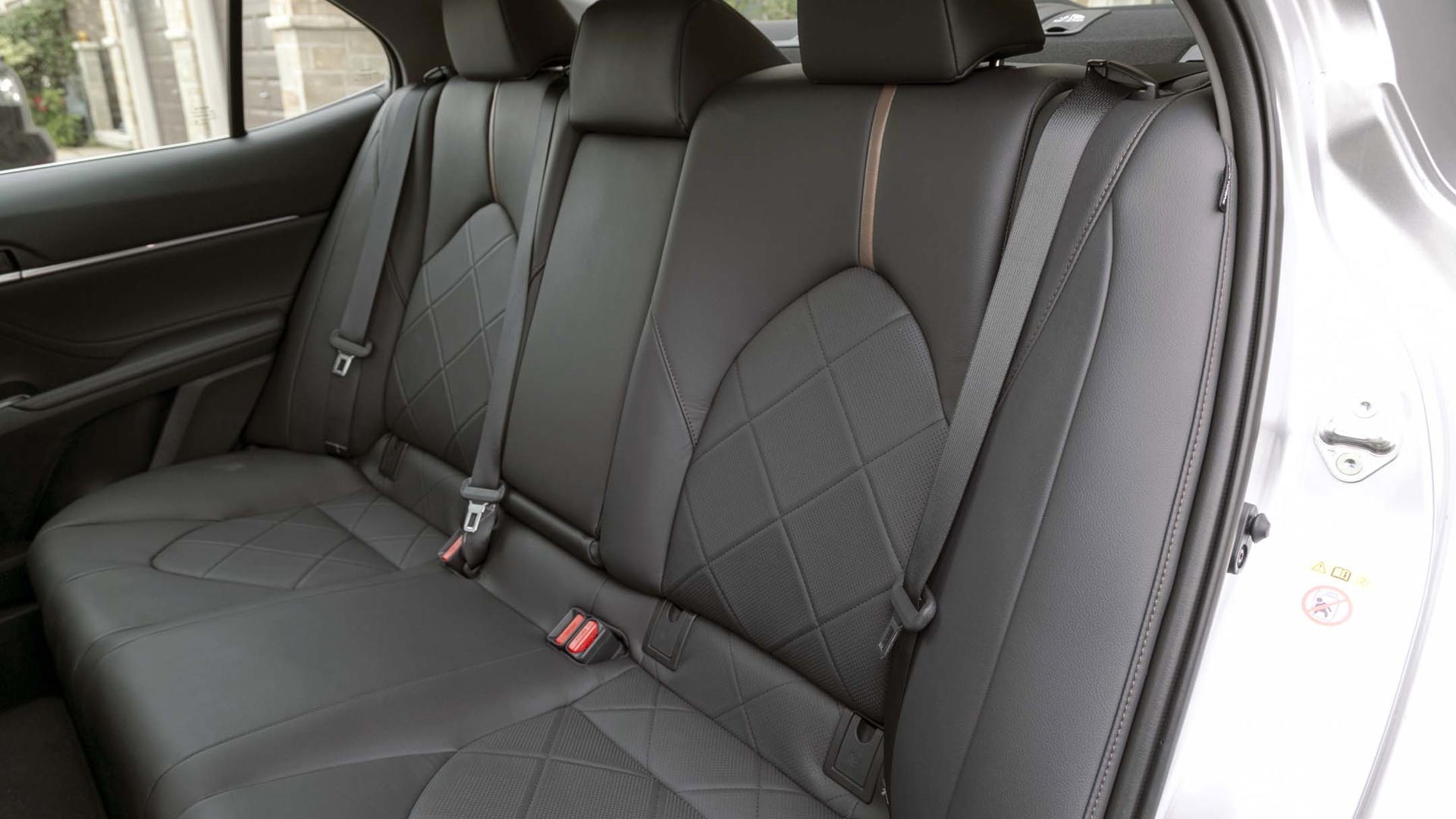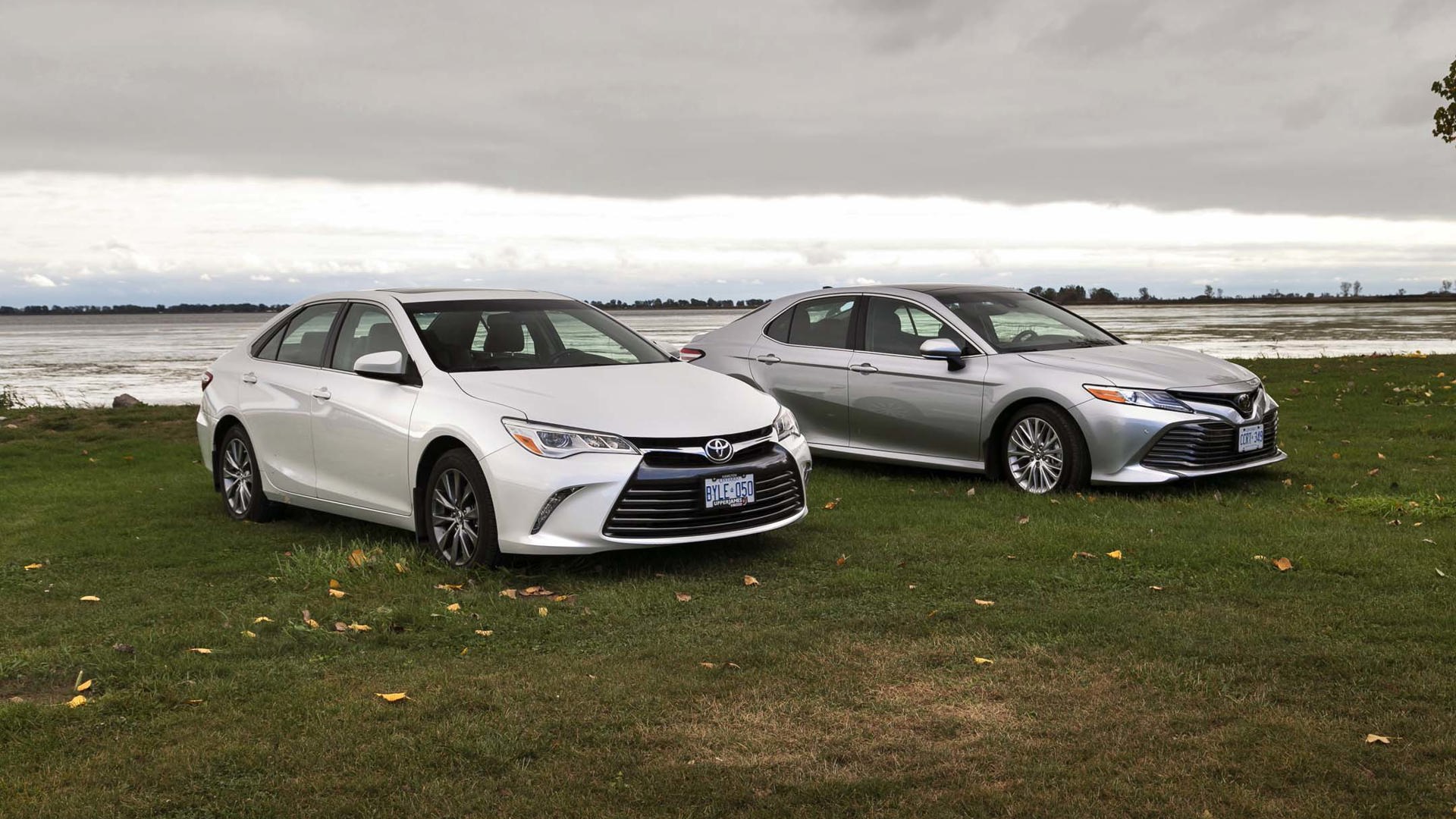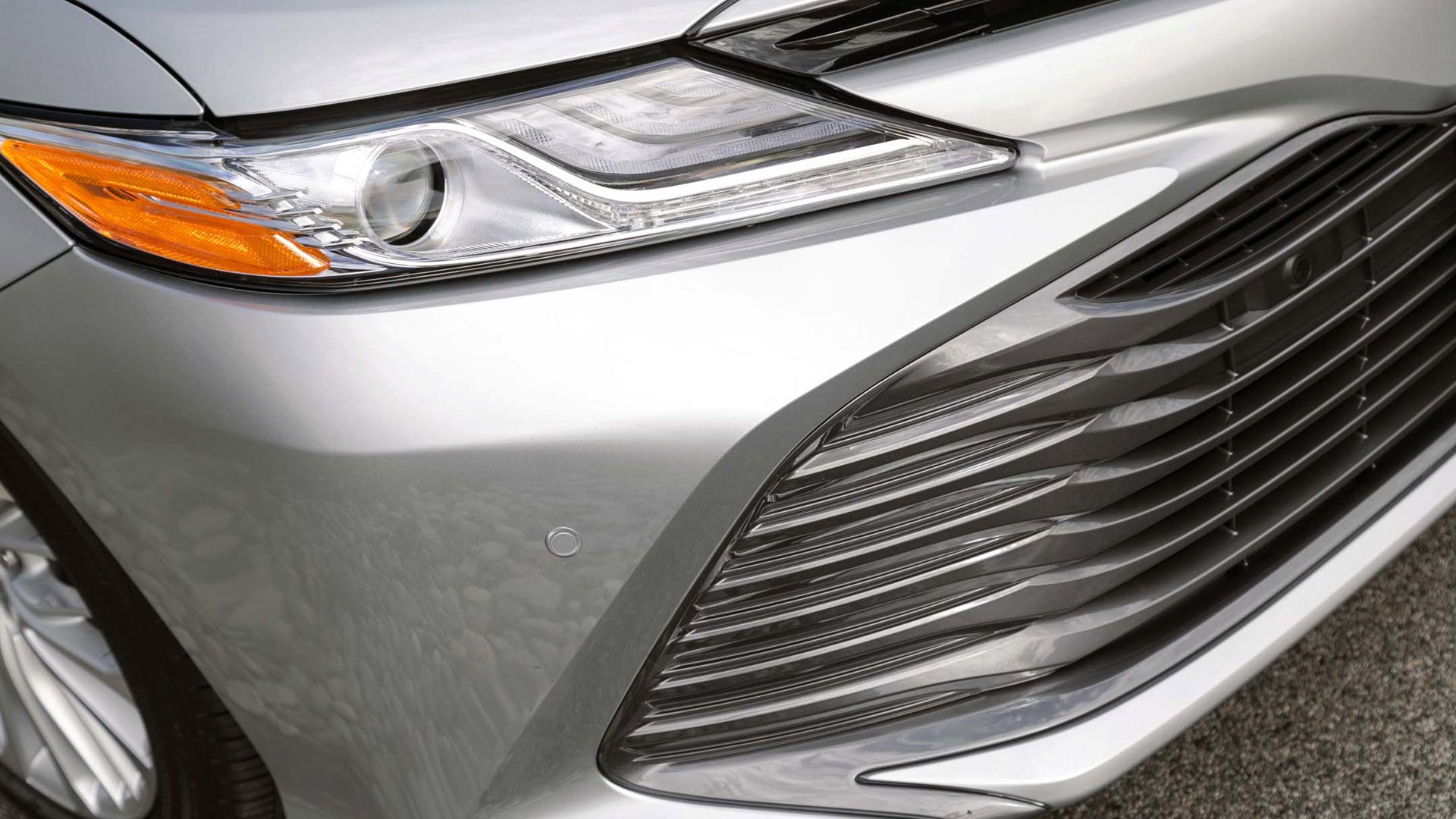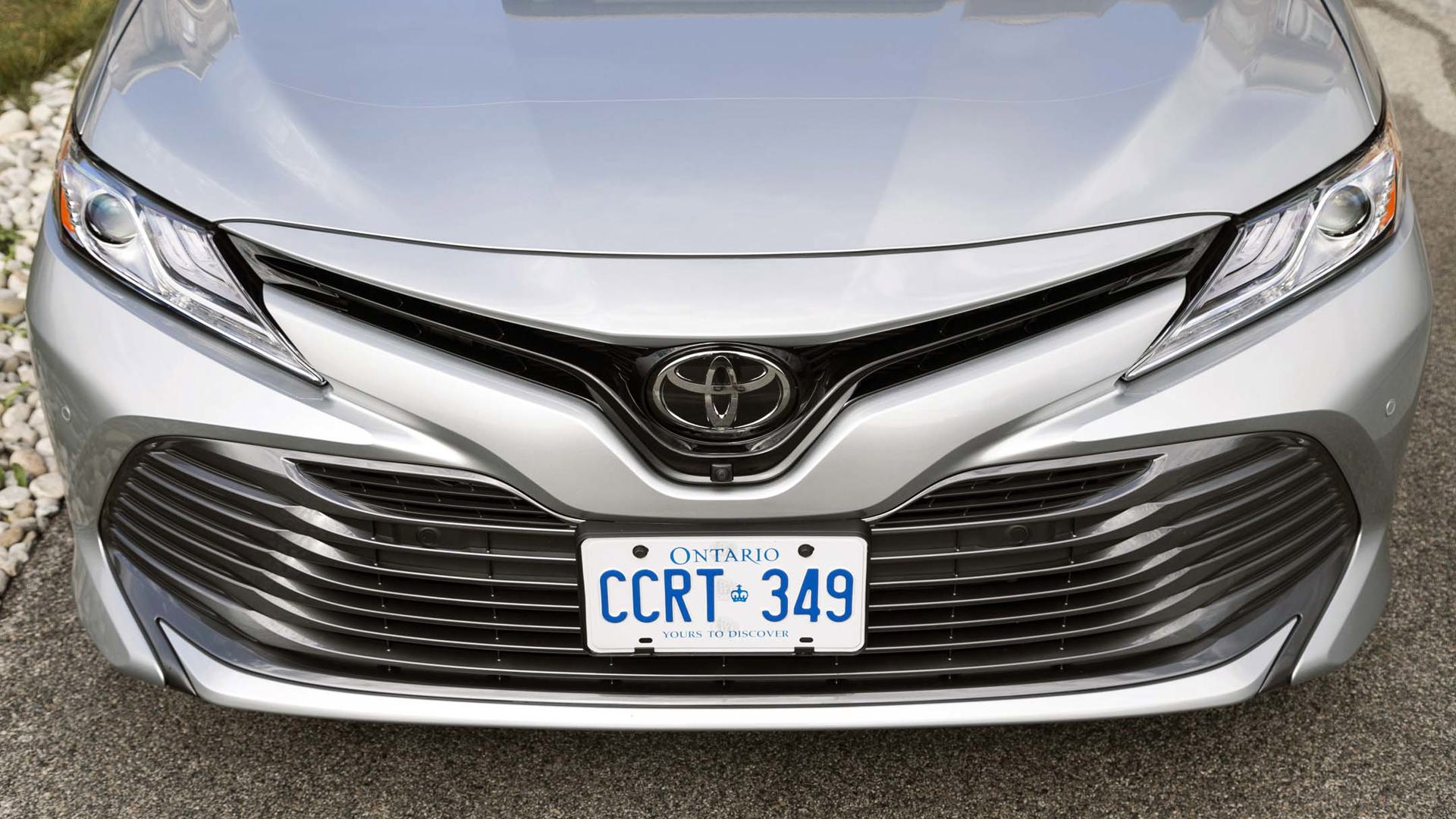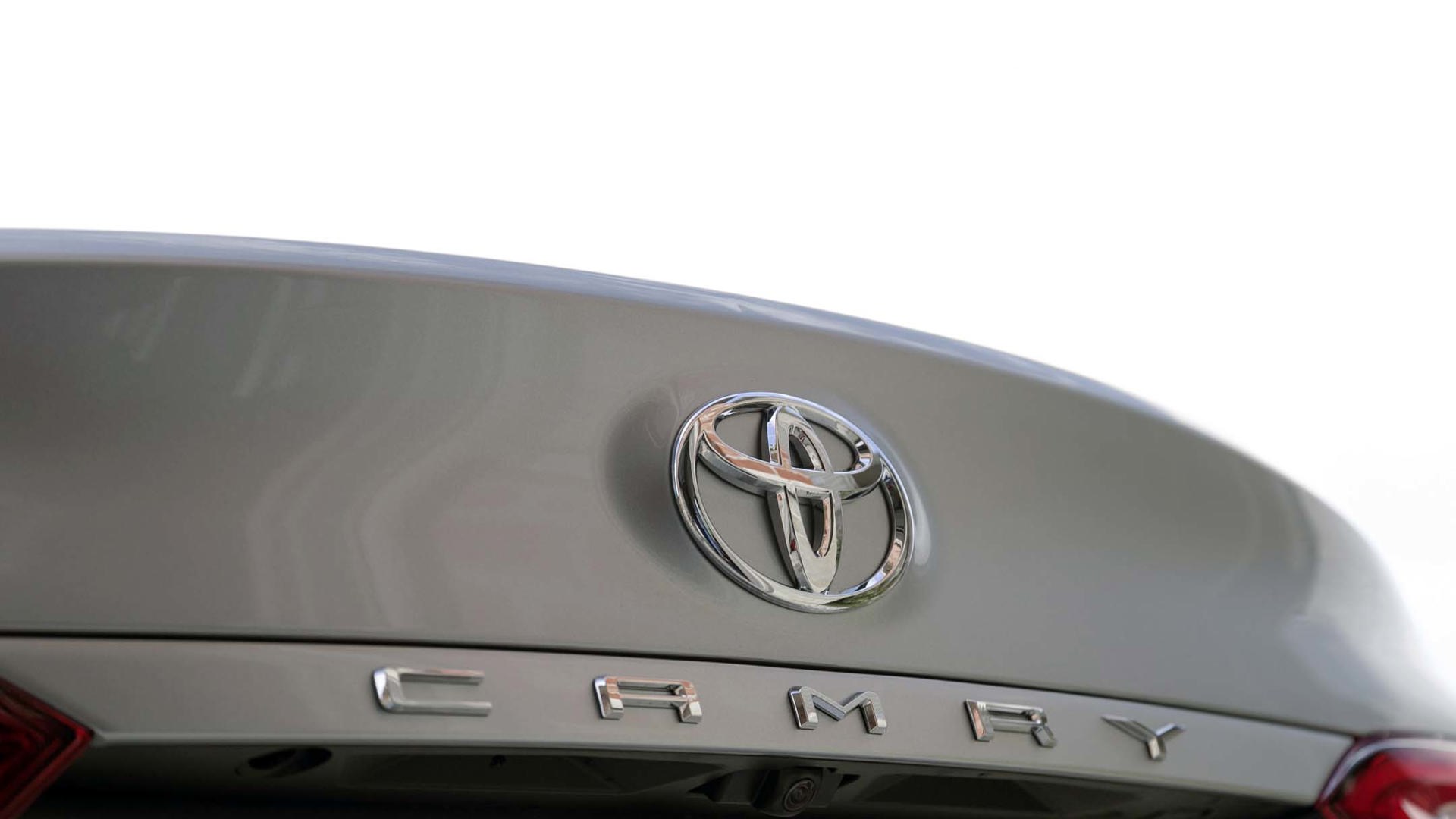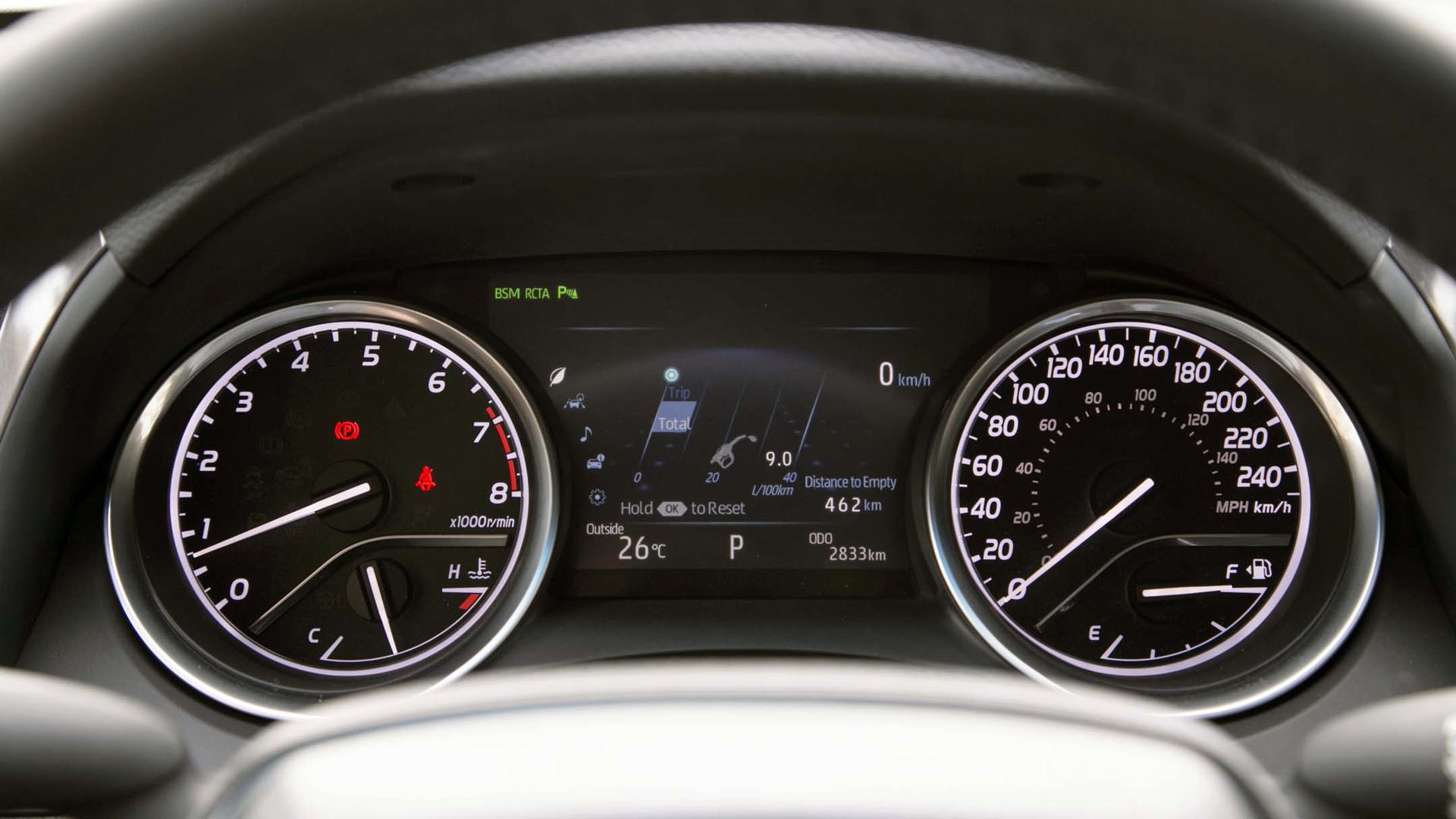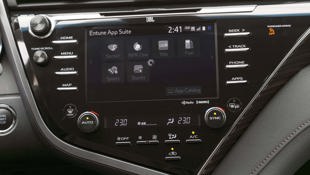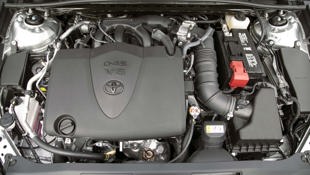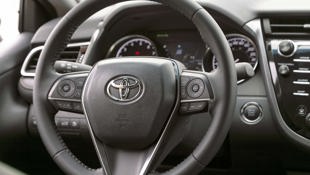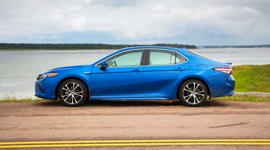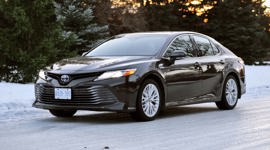 AutoTrader SCORE
AutoTrader SCORE
-
STYLING7/10
-
Safety7/10
-
PRACTICALITY7/10
-
USER-FRIENDLINESS7/10
-
FEATURES7/10
-
POWER8/10
-
COMFORT8/10
-
DRIVING FEEL8/10
-
FUEL ECONOMY7/10
-
VALUE7/10
Toyota’s recent marketing efforts for the all-new Camry have proudly proclaimed the model is not being offered in beige for 2018. Recognizing the last generation Camry was about as edgy as a robe and slippers, Toyota seems hell-bent on showing the world the company that once gave us the MR2 and Supra still has a bit of life in its veins.
Nobody ever suspects the silver Camry!
Supposed proof of this is the new XSE trim that features 19-inch wheels, quad tailpipes and sassy red leather seats. The styling is definitely edgier than previous Camrys, too, but let’s face it, making a “sporting” Camry is a fool’s errand.
First off, the Camry is a rather large, front-wheel-drive-only four-door, so those looking for a sport sedan are going to see through the emperor’s new clothes pretty quickly when the back roads turn serpentine. What’s more, sedans continue to lose favour with the general car-buying public, giving up sales to crossover SUVs.
Still, after moving 400,000 Camrys in North America last year (and even more in the preceding four years), Toyota’s mid-size sedan is a very big deal. But are buyers looking for a sportier Camry, or a better version of what they’ve grown to know and love: a comfortable, quiet, and very well built machine designed to give many years of faithful service? The majority of Camry sales are four-cylinder models, and it’s unlikely someone looking for the driving spice of an Audi A4 or even a Hemi-powered Dodge Charger is all of a sudden going to cross-shop the Camry just because its front end now looks like an upset koi.
So even though Toyota wants you to know that this new Camry isn’t your father’s Oldsmobile anymore, it seems to me an aging demographic who still associates a fine sedan with luxury and SUVs with, well, utility, may be more excited by the improvements made to the top-tier Camry XLE V6 than the sport-ified XSE.
Since I’m of the age to shop for midlife-crisis cars (hello upcoming Supra!) instead of sensible sedans, I turned to my baby-boomer father who just happens to have a last-generation Camry XLE V6 for some expert opinion on this new car.
The XLE trim on our tester is less flamboyant than the XSE models, but is nevertheless a far more interesting design than last year’s Camry. The profile and rear three-quarter view make me wonder how Lexus’s designers are going to be able to make this look richer for their ES interpretation next year.
For the most part, it’s a handsome car from these angles, with subtle “hips” over the rear fenders, but it is a little busy. In particular, from the roofline down the C-pillar, I count at least five distinct horizontal planes stamped into the sheet metal. Finished in a flawless, liquid-looking silver paint, those creases do catch the light and present interesting shadows, but it’s not the simple, clean design one finds on contemporary German (or German-styled Korean) sedans.
The Camry’s beltline is notably lower making for easier outward vision and a brighter cabin, but the front end is simply odd, looking as if someone has shoved a stack of cafeteria trays into the car’s gaping maw.
Dad found the new multi-spoke 18-inch wheels fetching, adding a lot to the premium look of the new car and I’d have to agree.
Inside, Toyota’s stylists have done a great job. The dashboard is particularly well-done with the faux-aluminum trim artfully sweeping from the top of the gauge binnacle down to the centre console. Similar metallic-looking flourishes flow into the door pulls and across the centre stack buttons, reminiscent of a high-end home audio component system. The only curiosity here is the weird plastic-metallic-wood-like trim that twists along the dash in front of the passenger.
All the buttons are large enough and well-separated to be easily manipulated on the go, and Toyota has wisely provided controls for key operations and proper knobs for volume, tuning and temperature control. Materials feel of decent quality and unsurprisingly, everything is solidly assembled.
The 8.0-inch touchscreen display is well-integrated into the dash and features bright graphics, but Toyota’s Entune 3.0 system, while decent in its operation, is certainly no substitute for the Apple CarPlay and Android Auto systems offered in the Camry’s nemesis: the Honda Accord. The JBL audio system provides mediocre sound.
Despite being fractionally longer and wider, the new Camry offers slightly less rear-seat room. Legroom in the back is down 24 mm, but only giants sitting behind giants will notice. The Camry’s rear perch is still plenty big and comfortable, and can accommodate three abreast. The front seats are comfortable, but offer little lateral support, and even in the costliest trim, provide only heating – not cooling – elements.
Trunk size is down to 428 L from 436 L last year, and the fuel tank is down from 65 L to 60 L, making us wonder what the larger Camry is doing with its extra bulk. And as a significant oversight, Toyota hasn’t provided a handle inside the trunk lid to aid in closing, meaning smudgy hand prints will be left on the paint.
While the updates to the interior versus my father’s Camry are generally appreciated, one aspect that has added complexity and cost to the Camry is the new Toyota Safety Sense suite of active safety functions. Dynamic radar cruise control (at speed, not stop-and-go), auto high-beams (but no auto wipers), lane-departure alert with steering assist are all nice-to-haves, but can also be overwhelming and intimidating to drivers unaccustomed to it.
On a clear and sunny day, driving in mild traffic, the adaptive cruise control had a sudden fit and inexplicably ceased to operate for the next several minutes. This is the sort of frustration that would have someone like my dad want to switch off the function and never use it again. That said, my father did note that incorporating items like the pre-collision system with pedestrian detection is a smart move, especially as he admits the reaction times of Boomers behind the wheel is slowing.
The driving experience has been improved with this new Camry as well. Most apparent is the increased gusto from the new 3.5L V6, mated to a new eight-speed automatic transmission. The increased thrust – now 301 hp versus 268 – is readily apparent and makes the Camry a bit of a sleeper (nobody ever suspects the silver Camry!). And it’s a beautifully smooth engine, revving cleanly and melodically in a way the competitors’ four-cylinders surely can’t match. In fact, when shopping for his car, the old Camry’s V6 was one of the primary selling points for my dad when the Toyota was compared to the gruff turbocharged four-cylinders of many competitors’ cars.
Shifts are sufficiently crisp when the “Sport” driving mode is selected, but for the most part, the eight-speed goes about its business anonymously, shifting seamlessly and silently, just as it should in a Camry. Plus, this new transmission helps Toyota achieve improved fuel efficiency with a combined average of 9.0 L/100 km. We saw an indicated average of 8.6 L/100 km with a mixed bag of driving conditions. The V6 still only requires regular fuel.
Road and engine noise isolation are improved in the new car too, although there was a surprising amount of wind noise around the tops of the front doors, and the doors themselves sound like hollow trash cans when shut. My father noted that the feel of the steering and the ride remind him of the European cars he’s driven before – a real positive. There’s unquestionably a solidness in the new Camry’s suspension set up that balances ride suppleness and handling stiffness better than the old car, but when driven hard, any illusions of this being a Euro sport sedan quickly vaporize.
The 2018 Camry is a significant improvement over the already very good (and very popular) last-generation Camry. It certainly should be, too, considering this new XLE V6 costs nearly $4,000 more than last year’s XLE V6. The improvements to the drivetrain certainly help justify the cost, as do the added features. But now nudging over the $40,000 mark, the Camry XLE V6 is starting to encroach on its $43,000 Lexus ES 350 cousin, and more importantly, puts it a few grand dearer than the all-new, top-of-the-line Honda Accord.
For fans of the Camry, the new XLE V6 surely does everything they want and expect it to, without playing dress-up in sporty XSE clothes, but it comes with a much higher price.
| Engine Displacement | 3.5L |
|---|---|
| Engine Cylinders | V6 |
| Peak Horsepower | 301 hp |
| Peak Torque | 267 lb-ft |
| Fuel Economy | 10.5/7.1/9.0 L/100 km cty/hwy/cmb |
| Cargo Space | 428 L |
| Model Tested | 2018 Toyota Camry XLE V6 |
| Base Price | $40,690 |
| A/C Tax | $100 |
| Destination Fee | $1,715 |
| Price as Tested | $42,505 |
|
Optional Equipment
None
|
|





